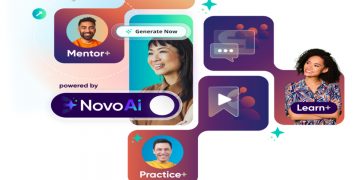An op-ed for educators and parents—and a 90-day action plan schools can start tomorrow
Doctors in Hyderabad (and across India) are flagging a disturbing pattern: very young children presenting with autism-like symptoms—delayed speech, poor eye contact, irritability, repetitive movements—triggered not by neurology, but by excessive, unsupervised screen exposure. Clinicians sometimes call it “virtual autism.” The most sobering part? Many of these symptoms ease when screens are removed and human interaction returns.
This is not a blame game. Working parents juggle impossible schedules. Teachers navigate syllabus pressure and device-heavy curricula. Platforms are engineered to hold attention. We didn’t fail; the environment did. But because schools are society’s most reliable place for coordinated change, we can redesign that environment—fast.
What screens are stealing (especially in the early years)
• Language growth thrives on back-and-forth conversation, not one-way content.
• Attachment and regulation form through eye contact, touch, co-play, and predictable routines.
• Attention is a muscle built by slow, effortful activities—story time, block building, outdoor play—not by rapid rewards.
• Vision and sleep suffer from prolonged near focus, bright evening light, and fractured routines.
When screen time displaces these inputs—especially 0–6 years—children can look “autism- like” without being autistic. That distinction matters morally and practically: it’s preventable and, often, reversible with the right adult behaviors and institutional norms.
A school’s responsibility: be “Screen-Smart,” not screen-free
Digital tools are powerful when they are purposeful, time-boxed, and followed by hands-on transfer. The problem is ambient, anytime screens that creep into crèches, classrooms, buses, and bedrooms.
Here is a Screen-Smart School Charter any institution can adopt and publish on its website and reception wall.
The Screen-Smart School Charter (K–5 emphasis)
1. Under 2: zero solo screens. If used for a video call, keep it short and co-viewed with an adult.
2. Ages 2–6: no unsupervised screens. In school, early years learning is screen-light and play-heavy.
3. Device-free zones: classrooms (unless a planned lesson requires), library story corners, dining areas, school buses, assemblies, and all toilets/bedrooms in hostels.
4. Purpose > pixels: Every digital activity states a learning objective, duration, and an offline transfer task (e.g., watch a life-cycle clip → draw it with crayons → explain to a peer).
5. Timeboxing & hygiene: Micro-sessions, planned blink breaks (20-20-20: every 20 minutes, look 20 feet away for 20 seconds), and daylight/outdoor blocks in the timetable.
6. Teacher training: Quarterly workshops on attention, speech-language development, vision care, and tech-pedagogy.
7. Parent partnership: A signed Home–School Screen Compact at admission; monthly nudges; counseling support when needed.
The Home–School Screen Compact (sample you can copy)
• We keep meals, homework time, and one hour before sleep device-free.
• No personal screens in bedrooms for children.
• For ages 2–6, adults co-view and talk about what’s on screen; no autoplay.
• We trade 30 minutes of passive screen for 30 minutes of outdoor play, reading, or conversation.
• When school flags concerns (speech, attention, sleep), we agree to a two-week family reset (no non-essential screens) and review progress together.
Have parents sign it during orientation. Display the compact in classrooms. Normalize it like a uniform policy.
What to replace screens with (the joyful part)
• Conversation rituals: “Rose–Bud–Thorn” at dinner (one good thing, one thing to improve, one thing to look forward to).
• Storytelling every day—teacher read-alouds and student retells with props.
• Hands + body: blocks, clay, puzzles, simple chores, fine-motor stations; daily outdoor games for gross motor.
• Music & rhyme: builds phonological awareness and regulation.
• Nature minutes: sunlight, barefoot grass time, watering plants—anchors attention better than any app.
• Calm starts: breathing, blink breaks, and 60-second “eyes closed, listen” exercises between lessons.
A 30–60–90 day institutional plan
Day 0 (today): The principal issues a note: “We are adopting the Screen-Smart Charter to protect attention, language, and wellbeing.”
By Day 30
• Audit & announce:
• Map where/how screens appear (classrooms, corridors, transport, daycare).
• Remove autoplay, disable notifications, and set device lock screens with “Purpose • Time • Transfer.”
• Train staff: 90-minute module on attention, speech development, and purposeful tech use.
• Launch parent orientation with the Home–School Compact; distribute a one-page “Reset Guide.”
By Day 60
• Timetable redesign:
• Early years: screen-light mornings, play-and-outdoor heavy blocks.
• Primary: no digital tasks in first lesson; at most one purposeful digital block/day.
• Install environment cues: device-parking baskets; “Talk to Me” posters at meal areas; eye-health charts in rooms.
• Start data capture: weekly teacher checklist for each class (see below). By Day 90
• Publish a simple dashboard on the noticeboard and parent portal:
• Avg. student screen minutes at school (by grade).
• % classes meeting blink-break standards.
• Outdoor minutes per day (target ≥45 in early years).
• Read-aloud minutes per week.
• Referrals for speech/attention concerns (trend line).
• Hold a community forum with a pediatrician, an eye specialist, and a speech- language therapist for Q&A.
• Celebrate wins—photos of play corners, nature walks, and family reading nights.
The weekly teacher checklist (one page, tick-box)
• Did I run a read-aloud (10–15 min) this week?
• Did our digital activity have a clear purpose, timebox, and offline transfer?
• Did we complete three blink breaks during any screen task?
• Did each child get ≥45 min outdoor time across the week (early years) / ≥30 min (primary)?
• Which two students did I personally converse with for ≥2 minutes today?
• Any speech/attention/sleep concerns to flag for counselor follow-up?
Equity matters: support families, don’t scold them
Many children spend long hours with caregivers who understandably rely on screens to manage the day. Schools can help by providing toy-and-book libraries, Saturday playgroups, and parent circles to swap practical hacks: setting app timers, creating device baskets, meal- time talk prompts, bedtime routines. This is community design, not individual blame.
Three myths to retire
1. “Educational videos = learning.” Not without dialogue and hands-on follow-up.
2. “More tech means modern schooling.” True modernity is intentional use and measured impact.
3. “Kids must learn screens early to get ahead.” Foundational skills—language, self- control, curiosity, movement – are the real accelerators. Screens can wait; childhood can’t.
The leadership moment
Every school claims to be child-centric. This is the test. Publish your charter. Rework your timetable. Stand with parents who want help, not judgment. If you lead decisively now, you won’t just protect eyesight, sleep, and speech—you’ll restore attention, conversation, and play to their rightful place at the heart of childhood.
Let’s stop outsourcing childhood to screens. Design it back into homes and schools— deliberately, lovingly, and starting this term.




























































